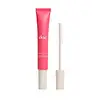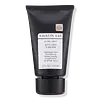What's inside
What's inside
 Key Ingredients
Key Ingredients

 Benefits
Benefits

 Concerns
Concerns

 Ingredients Side-by-side
Ingredients Side-by-side

Water
Skin ConditioningCetearyl Alcohol
EmollientGlycerin
HumectantNeopentyl Glycol Diheptanoate
EmollientPropanediol
SolventBehentrimonium Chloride
PreservativeCetrimonium Chloride
AntimicrobialCitrus Aurantium Dulcis Peel Oil
MaskingDimethicone
EmollientVp/Va Copolymer
Ceteareth-20
CleansingParfum
MaskingIsopropyl Alcohol
SolventHydroxyethylcellulose
Emulsion StabilisingLinum Usitatissimum Seed Extract
PerfumingCocos Nucifera Oil
MaskingVitis Vinifera Seed Oil
EmollientPhenoxyethanol
PreservativeSalvia Hispanica Seed Extract
EmollientCaprylyl Glycol
EmollientEthylhexylglycerin
Skin ConditioningHexylene Glycol
EmulsifyingPolyquaternium-73
Butyrospermum Parkii Butter
Skin ConditioningOpuntia Ficus-Indica Seed Oil
EmollientTetrasodium Glutamate Diacetate
Hylocereus Undatus Fruit Extract
Skin ConditioningTocopherol
AntioxidantMoringa Oleifera Leaf Extract
Skin ConditioningButylene Glycol
HumectantCereus Grandiflorus Extract
AntioxidantCitrus Aurantifolia Fruit Extract
Skin ConditioningPhalaenopsis Amabilis Flower Extract
BleachingHibiscus Rosa-Sinensis Flower Extract
HumectantAloe Barbadensis Leaf Juice
Skin ConditioningWater, Cetearyl Alcohol, Glycerin, Neopentyl Glycol Diheptanoate, Propanediol, Behentrimonium Chloride, Cetrimonium Chloride, Citrus Aurantium Dulcis Peel Oil, Dimethicone, Vp/Va Copolymer, Ceteareth-20, Parfum, Isopropyl Alcohol, Hydroxyethylcellulose, Linum Usitatissimum Seed Extract, Cocos Nucifera Oil, Vitis Vinifera Seed Oil, Phenoxyethanol, Salvia Hispanica Seed Extract, Caprylyl Glycol, Ethylhexylglycerin, Hexylene Glycol, Polyquaternium-73, Butyrospermum Parkii Butter, Opuntia Ficus-Indica Seed Oil, Tetrasodium Glutamate Diacetate, Hylocereus Undatus Fruit Extract, Tocopherol, Moringa Oleifera Leaf Extract, Butylene Glycol, Cereus Grandiflorus Extract, Citrus Aurantifolia Fruit Extract, Phalaenopsis Amabilis Flower Extract, Hibiscus Rosa-Sinensis Flower Extract, Aloe Barbadensis Leaf Juice
Water
Skin ConditioningIsopropyl Palmitate
EmollientPolyquaternium-37
Cetearyl Alcohol
EmollientParfum
MaskingPropylene Glycol Dicaprylate/Dicaprate
EmollientPhenoxyethanol
PreservativeCetrimonium Chloride
AntimicrobialPolyquaternium-11
PPG-1 Trideceth-6
Skin ConditioningPolyquaternium-46
Ethylhexylglycerin
Skin ConditioningHydroxyethylcellulose
Emulsion StabilisingC11-13 Isoparaffin
SolventDisodium EDTA
Glycerin
HumectantCaprylic/Capric Triglyceride
MaskingSodium PCA
HumectantRicinus Communis Seed Oil
MaskingMangifera Indica Seed Butter
Skin ConditioningChamomilla Recutita Flower Extract
MaskingHelianthus Annuus Seed Oil
EmollientPersea Gratissima Oil
Skin ConditioningSodium Lactate
BufferingArginine
MaskingCaprylyl Glycol
EmollientAspartic Acid
MaskingCoco-Glucoside
CleansingAminomethyl Propanol
BufferingPCA
HumectantTriticum Vulgare Germ Extract
Skin ConditioningLecithin
EmollientCarrageenan
Xanthan Gum
EmulsifyingAlgin
MaskingGuar Hydroxypropyltrimonium Chloride
Skin ConditioningChitosan
Sorbitan Oleate
EmulsifyingGlycine
BufferingAlanine
MaskingTocopherol
AntioxidantOctanediol
Phenylpropanol
MaskingPropanediol
SolventSerine
MaskingPinus Sylvestris Cone Extract
MaskingValine
MaskingOleic Acid
EmollientCitric Acid
BufferingDisodium Phosphate
BufferingPolysorbate 60
EmulsifyingSodium Benzoate
MaskingThreonine
Proline
Skin ConditioningIsoleucine
Skin ConditioningPotassium Sorbate
PreservativeHistidine
HumectantPhenylalanine
MaskingSodium Phosphate
BufferingCinnamidopropyltrimonium Chloride
Capryloyl Glycerin/Sebacic Acid Copolymer
Skin ConditioningDiheptyl Succinate
EmollientWater, Isopropyl Palmitate, Polyquaternium-37, Cetearyl Alcohol, Parfum, Propylene Glycol Dicaprylate/Dicaprate, Phenoxyethanol, Cetrimonium Chloride, Polyquaternium-11, PPG-1 Trideceth-6, Polyquaternium-46, Ethylhexylglycerin, Hydroxyethylcellulose, C11-13 Isoparaffin, Disodium EDTA, Glycerin, Caprylic/Capric Triglyceride, Sodium PCA, Ricinus Communis Seed Oil, Mangifera Indica Seed Butter, Chamomilla Recutita Flower Extract, Helianthus Annuus Seed Oil, Persea Gratissima Oil, Sodium Lactate, Arginine, Caprylyl Glycol, Aspartic Acid, Coco-Glucoside, Aminomethyl Propanol, PCA, Triticum Vulgare Germ Extract, Lecithin, Carrageenan, Xanthan Gum, Algin, Guar Hydroxypropyltrimonium Chloride, Chitosan, Sorbitan Oleate, Glycine, Alanine, Tocopherol, Octanediol, Phenylpropanol, Propanediol, Serine, Pinus Sylvestris Cone Extract, Valine, Oleic Acid, Citric Acid, Disodium Phosphate, Polysorbate 60, Sodium Benzoate, Threonine, Proline, Isoleucine, Potassium Sorbate, Histidine, Phenylalanine, Sodium Phosphate, Cinnamidopropyltrimonium Chloride, Capryloyl Glycerin/Sebacic Acid Copolymer, Diheptyl Succinate
Ingredients Explained
These ingredients are found in both products.
Ingredients higher up in an ingredient list are typically present in a larger amount.
Caprylyl Glycol is a humectant and emollient, meaning it attracts and preserves moisture.
It is a common ingredient in many products, especially those designed to hydrate skin. The primary benefits are retaining moisture, skin softening, and promoting a healthy skin barrier.
Though Caprylyl Glycol is an alcohol derived from fatty acids, it is not the kind that can dry out skin.
This ingredient is also used as a preservative to extend the life of products. It has slight antimicrobial properties.
Learn more about Caprylyl GlycolCetearyl alcohol is a mixture of two fatty alcohols: cetyl alcohol and stearyl alcohol. It is mainly used as an emulsifier. Emulsifiers help prevent the separation of oils and products. Due to its composition, it can also be used to thicken a product or help create foam.
Cetearyl alcohol is an emollient. Emollients help soothe and hydrate the skin by trapping moisture.
Studies show Cetearyl alcohol is non-toxic and non-irritating. The FDA allows products labeled "alcohol-free" to have fatty alcohols.
This ingredient is usually derived from plant oils such as palm, vegetable, or coconut oils. There is debate on whether this ingredient will cause acne.
Due to the fatty acid base, this ingredient may not be Malassezia folliculitis safe.
Learn more about Cetearyl AlcoholThis ingredient is a preservative, antimicrobial, and emulsifier. It is often used in cosmetics for its ability to cleanse, condition, and reduce static.
Cetrimonium chloride is a quaternary ammonium salt, meaning it has a water-soluble structure.
Ethylhexylglycerin (we can't pronounce this either) is commonly used as a preservative and skin softener. It is derived from glyceryl.
You might see Ethylhexylglycerin often paired with other preservatives such as phenoxyethanol. Ethylhexylglycerin has been found to increase the effectiveness of these other preservatives.
Glycerin is already naturally found in your skin. It helps moisturize and protect your skin.
A study from 2016 found glycerin to be more effective as a humectant than AHAs and hyaluronic acid.
As a humectant, it helps the skin stay hydrated by pulling moisture to your skin. The low molecular weight of glycerin allows it to pull moisture into the deeper layers of your skin.
Hydrated skin improves your skin barrier; Your skin barrier helps protect against irritants and bacteria.
Glycerin has also been found to have antimicrobial and antiviral properties. Due to these properties, glycerin is often used in wound and burn treatments.
In cosmetics, glycerin is usually derived from plants such as soybean or palm. However, it can also be sourced from animals, such as tallow or animal fat.
This ingredient is organic, colorless, odorless, and non-toxic.
Glycerin is the name for this ingredient in American English. British English uses Glycerol/Glycerine.
Learn more about GlycerinHydroxyethylcellulose is used to improve the texture of products. It is created from a chemical reaction involving ethylene oxide and alkali-cellulose. Cellulose is a sugar found in plant cell walls and help give plants structure.
This ingredient helps stabilize products by preventing ingredients from separating. It can also help thicken the texture of a product.
This ingredient can also be found in pill medicines to help our bodies digest other ingredients.
Learn more about HydroxyethylcelluloseParfum is a catch-all term for an ingredient or more that is used to give a scent to products.
Also called "fragrance", this ingredient can be a blend of hundreds of chemicals or plant oils. This means every product with "fragrance" or "parfum" in the ingredients list is a different mixture.
For instance, Habanolide is a proprietary trade name for a specific aroma chemical. When used as a fragrance ingredient in cosmetics, most aroma chemicals fall under the broad labeling category of “FRAGRANCE” or “PARFUM” according to EU and US regulations.
The term 'parfum' or 'fragrance' is not regulated in many countries. In many cases, it is up to the brand to define this term.
For instance, many brands choose to label themselves as "fragrance-free" because they are not using synthetic fragrances. However, their products may still contain ingredients such as essential oils that are considered a fragrance by INCI standards.
One example is Calendula flower extract. Calendula is an essential oil that still imparts a scent or 'fragrance'.
Depending on the blend, the ingredients in the mixture can cause allergies and sensitivities on the skin. Some ingredients that are known EU allergens include linalool and citronellol.
Parfum can also be used to mask or cover an unpleasant scent.
The bottom line is: not all fragrances/parfum/ingredients are created equally. If you are worried about fragrances, we recommend taking a closer look at an ingredient. And of course, we always recommend speaking with a professional.
Learn more about ParfumPhenoxyethanol is a preservative that has germicide, antimicrobial, and aromatic properties. Studies show that phenoxyethanol can prevent microbial growth. By itself, it has a scent that is similar to that of a rose.
It's often used in formulations along with Caprylyl Glycol to preserve the shelf life of products.
Propanediol is an all-star ingredient. It softens, hydrates, and smooths the skin.
It’s often used to:
Propanediol is not likely to cause sensitivity and considered safe to use. It is derived from corn or petroleum with a clear color and no scent.
Learn more about PropanediolTocopherol (also known as Vitamin E) is a common antioxidant used to help protect the skin from free-radicals and strengthen the skin barrier. It's also fat soluble - this means our skin is great at absorbing it.
Vitamin E also helps keep your natural skin lipids healthy. Your lipid skin barrier naturally consists of lipids, ceramides, and fatty acids. Vitamin E offers extra protection for your skin’s lipid barrier, keeping your skin healthy and nourished.
Another benefit is a bit of UV protection. Vitamin E helps reduce the damage caused by UVB rays. (It should not replace your sunscreen). Combining it with Vitamin C can decrease sunburned cells and hyperpigmentation after UV exposure.
You might have noticed Vitamin E + C often paired together. This is because it is great at stabilizing Vitamin C. Using the two together helps increase the effectiveness of both ingredients.
There are often claims that Vitamin E can reduce/prevent scarring, but these claims haven't been confirmed by scientific research.
Learn more about TocopherolWater. It's the most common cosmetic ingredient of all. You'll usually see it at the top of ingredient lists, meaning that it makes up the largest part of the product.
So why is it so popular? Water most often acts as a solvent - this means that it helps dissolve other ingredients into the formulation.
You'll also recognize water as that liquid we all need to stay alive. If you see this, drink a glass of water. Stay hydrated!
Learn more about Water